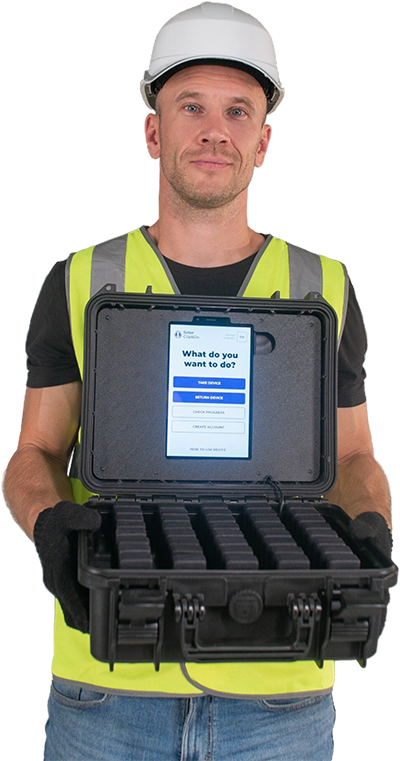How To Reduce Staff Turnover In Healthcare: Manual Handling Injury Prevention For Nurses, Paramedics and Aged Care Workers
Studies have linked a higher risk of pain and injury in the healthcare sector to a worker’s decision to leave their job. Employee turnover is a problem in many industries but in healthcare it is even more so. Quality workers are already in short supply and the cost of replacing even a single nurse in the US can be as high as $88,000. Thus, it is paramount to implement solutions that reduce the risk of manual handling injuries in healthcare workers.

Studies have linked a higher risk of pain and injury in the healthcare sector to a worker’s decision to leave their job. Employee turnover is a problem in many industries but in healthcare it is even more so. Quality workers are already in short supply and the cost of replacing even a single nurse in the US can be as high as $88,000. Thus, it is paramount to implement solutions that reduce the risk of manual handling injuries in healthcare workers.
The Largest Cause Of Workplace Injuries In The Healthcare Sector
Musculoskeletal injuries are being reported in healthcare workers at a far higher rate than many other industries. A healthcare worker is more likely to sustain a musculoskeletal injury than a mining, construction or manufacturing worker.
Lifting people is an unavoidable aspect of working in the healthcare industry. Nurses, paramedics and aged care workers regularly lift weights that, in any other industry, would be assisted by equipment. That is why patient manual handling poses one of the highest injury risks out of all industries with the most common types of musculoskeletal injuries sustained by healthcare workers being lower back injuries, strains, rotator cuff injuries, and tendinitis.
One study found that as many as 83% of all injuries sustained in the healthcare sector were as a result of musculoskeletal factors. Every year, 55% of nurses experience lower back pain and 44% experience shoulder pain. Research shows that some healthcare workers spend as much as 20 minutes out of every hour with their back in an awkward position.
Potential Solutions
So what can be done to reduce manual handling injuries in healthcare workers? Current market approaches to the problem can be broken down into four categories: equipment and aides, policy and procedure, manual handling training and movement coaching. Let’s look at some of the options in these categories and their benefits and drawbacks.
Equipment and Aides
Some companies have successfully reduced or eliminated ergonomic injuries through supplying additional equipment to assist workers with lifting patients. These aides include things like mechanical hoists or slings and low-friction mats. The downside of many of these items are that they mostly require more than one worker to use them. The healthcare industry is often understaffed and researchers have found that workers will forgo equipment that requires two people to operate to move a patient because even if there is no one there to help them the patient still needs to be moved.
Policy and Procedure
One way of overcoming this problem is implementing a strict two-person lift policy; requiring nurses, paramedics and aged care workers never to lift a patient alone. Many companies in the healthcare sector already impose two-person or no lift policies, urging staff to use equipment to hoist and move patients. However, some studies have shown that workers often do not abide by these policies. Healthcare is unpredictable, with workers being responsible for the health of frail, ill or otherwise high-risk patients. Usually, nurses, paramedics and aged care workers care deeply about their patients and when the choice is between helping a patient or following a policy most would choose to help, even if they do so at risk of injury.
Manual Handling Training
Most healthcare organizations incorporate some form of manual handling training into their onboarding processes for workers. Traditional manual handling training is usually conducted in a classroom setting and teaches basic ergonomic techniques for correct lifting and bending. Whilst training does somewhat increase awareness, researchers found that it is not likely to be retained afterwards and is unlikely to create any sustainable behavioral change in the long-term.
Movement Coaching
Another option is implementing one-on-one movement coaching; employing an ergonomics expert to work with healthcare staff at improving their own behaviors. One-on-one coaching is much more effective in creating behavioral change in the way in which healthcare workers bend, lift and twist when moving patients. However, this can be a very costly option (as much as $1,500 per worker) which is not scalable in large organizations.
Smart Wearable Technology for Healthcare Workers
There is another option; a solution that is both affordable and effective. The future of preventing manual handling injuries in healthcare workers is a fully integrated data-driven approach incorporating smart wearable technology, machine learning and predictive analytics to address the cause of injuries head on and reduce the ergonomic risks before they can even begin to lead to injury.
AI-driven wearable technology is shaking things up seeing healthcare organizations around the world weaving wearables into their processes. Solutions to assist workers to learn more about their movements, understand them, and help reduce their risk of injury – permanently.
New advances in ergonomic training using sensors and biofeedback are forging a step change in the healthcare sector; targeting a decrease in absenteeism and turnover as result of manual handling injury reduction. Leveraging the power of artificial intelligence (AI) and machine learning (ML), coaching healthcare workers to self-correct their movements in real-time and avoid ergonomic injuries, is stimulating an engaging personalized pathway to sustainable behavioral change.
About Soter Analytics
Soter Analytics is a global safety science company producing AI-supported wearable solutions that reduce the risk of ergonomic injuries in the workplace. Soter wearables are widely used in logistics, manufacturing, healthcare and other industries, helping leading companies to prevent up to 55% of back & shoulder musculoskeletal injuries.
To see how Soter Analytics can help you improve safety behavior, engage employees to self-manage their training and prevent workplace ergonomic injuries, simply Book a FREE Demo today.


